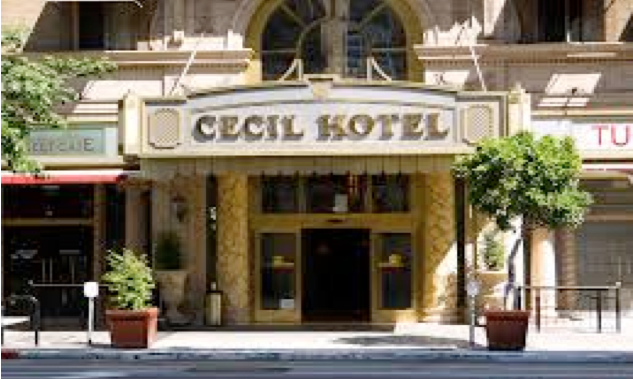CommentsDEEGAN ON LA-It’s hard to find building projects that create no public outcry about zoning variances, no destructive impacts to neighborhoods, and no challenges to developers and politicos. But these projects are everywhere – hiding in plain sight -- in downtown Los Angeles. The reason they are unseen is because all of the work is being done inside already constructed buildings.
While downtown Los Angeles is exploding with lots of new construction projects, it is also recapturing the past through adaptive reuse of many old buildings. These projects provide an increase in housing stock and remind us that there are many forms of development. Repurposing what's already there does not generate the type of community blowback and the bad vibes caused when developers announce new projects that set off struggles with communities opposed to uncontrolled growth -- especially when the developers destroy older buildings to clear the way for the new ones.
Specialists in the adaptive reuse of buildings are capitalizing on new laws such as the city’s Adaptive Reuse Ordinance with dozens of downtown projects. While this ordinance was designed to cluster housing, retail and workspaces around transit stops, theoretically lessening traffic, it is also establishing multiple “new urbanism” hubs in downtown. This is transforming repurposed buildings into mixed commercial and residential uses where you can work, play, shop and be entertained within easy reach of each other. Cutting down traffic may be a planner’s goal; living in a cool, adaptively repurposed building with some embedded historic character with many of your needs locally met, could be a tenant or owner’s dream.
The city’s Office of Historic Resources describes the Adaptive Reuse Ordinance, approved for DTLA in 1999 and extended to a few other neighborhoods in 2003, as “one of the most significant incentives related to historic preservation in Los Angeles, facilitating the conversion of dozens of historic and under-utilized structures into new housing units,” pointing out that “it provides for an expedited approval process and ensures that older and historic buildings are not subjected to the same zoning and code requirements that apply to new construction.”
The impact is that “several thousand new housing units, with thousands more in the development pipeline, [are] demonstrating that historic preservation can serve as a powerful engine for economic revitalization and the creation of new housing supply.”
Architects and designers face a new hurdle, though, in aligning historic codes and principles with modern requirements for building safety and fire department codes.
"Regulations of LAFD and Los Angeles Department of Building and Safety are my biggest challenges, not neighborhood blowback,” explains Karin Liljegren, the Principal and Founder of Omgivning Architecture and Interior Design. “Trying to find the fine line between liability and historic codes that allows a project to go forward with historic integrity can be difficult. Sometimes, developers will pull out of a project when it becomes too much.”
Those stress points have not slowed down Omgivning, as evidenced by a visit to its downtown office that is overflowing with workstations, workers as well as several friendly dogs roaming through the space. A look at their project list is exhausting. While Liljegren does not follow the Frank Lloyd Wright practice of building and then furnishing structures in holistic harmony, her teams of architects, designers and urbanists are capable of providing everything from the heavy lifting of architectural visioning to the tiniest design details.
Off-menu is exorcisms, like expunging the ghosts from one of their projects, the Cecil Hotel, (photo above) which has had a reputation over the past 90 years as a very creepy place -- allegedly home to murders, suicides, missing persons and serial killers. This building needed not only some adaptive reuse, but some proactive P.R. There will likely be a waiting list for occupancy after its makeover.
The new urbanism is experienced on an intimate scale at the rooftop “farm garden” at the repurposed 801 S. Broadway building, providing fresh vegetables to the several restaurants on the ground floor. One of Omgivning’s biggest projects (at 1.1 million square feet) is the former Hamburger's and May Company Department Store which has also seen service as a garment factory and a branch library on its third floor. According to Omngiving, it is being repurposed into “a large and small retail, a market collective, creative office, and hotel, with a 110,000 SF rooftop that will include a public park, two pools and seven restaurant/bars.” Talk about new urbanism and having everything local: all they need is a curb cut for Uber pick-ups and drop offs.
New Urbanists, a lifestyle group slowly progressing from cult to broader acceptance, will find lots of opportunities to live, shop, work and play within a small radius at any one of the several repurposed buildings adapted by Omngivning and others in DTLA.
Best of all, the new urbanists will move into unique and historic housing stock that has not been marred by the contention between communities and developers, negative energy that has affected a great swath of Los Angeles. All those bad vibes, much like what once suffocated the Cecil Hotel, will not be part of their move-in package.
(Tim Deegan is a long-time resident and community leader in the Miracle Mile, who has served as board chair at the Mid City West Community Council and on the board of the Miracle Mile Civic Coalition. Tim can be reached at [email protected].)
Explore
Our mission is to promote and facilitate civic engagement and neighborhood empowerment, and to hold area government and its politicians accountable.

 CityWatch Los Angeles
Politics. Perspective. Participation.
CityWatch Los Angeles
Politics. Perspective. Participation.
27
Sun, Apr















